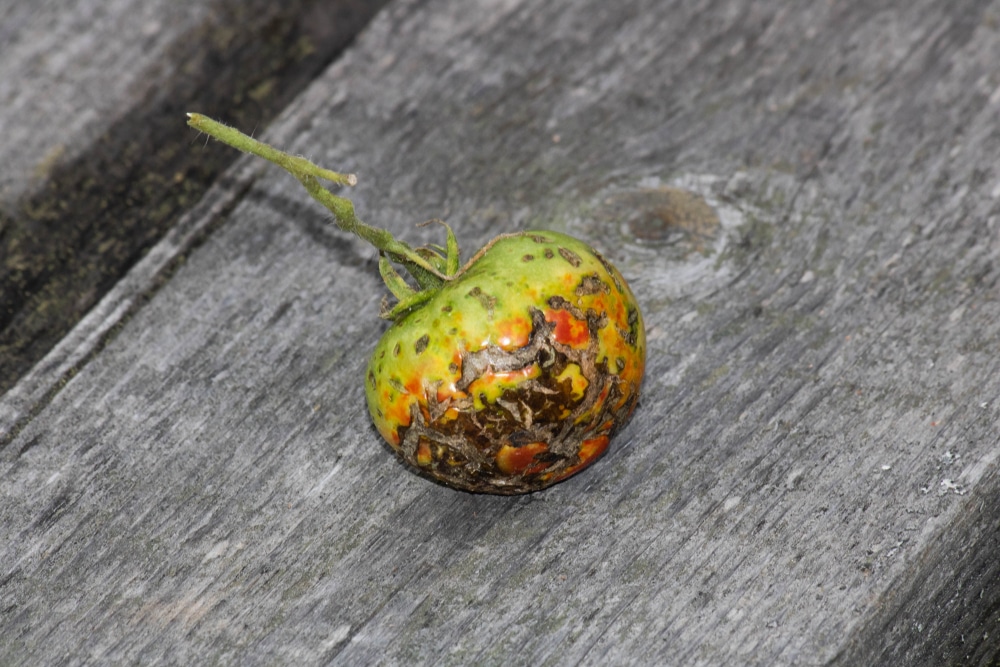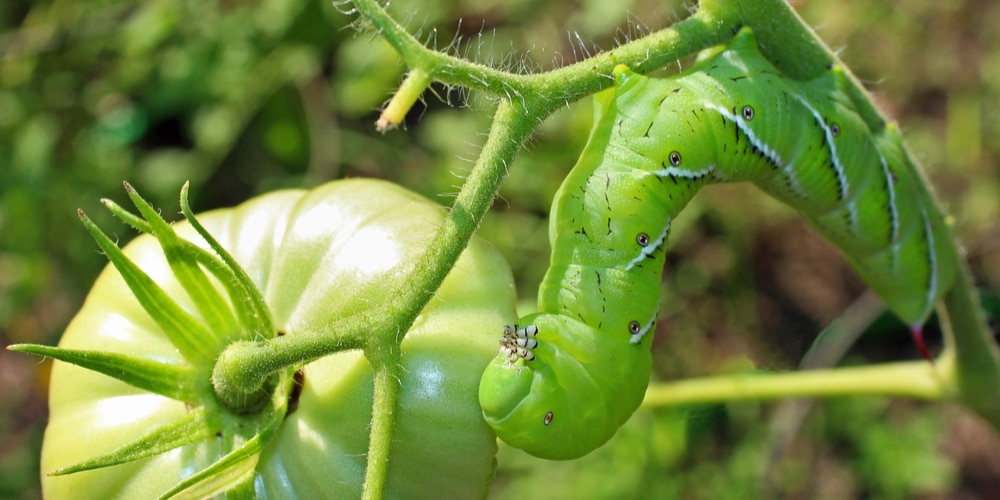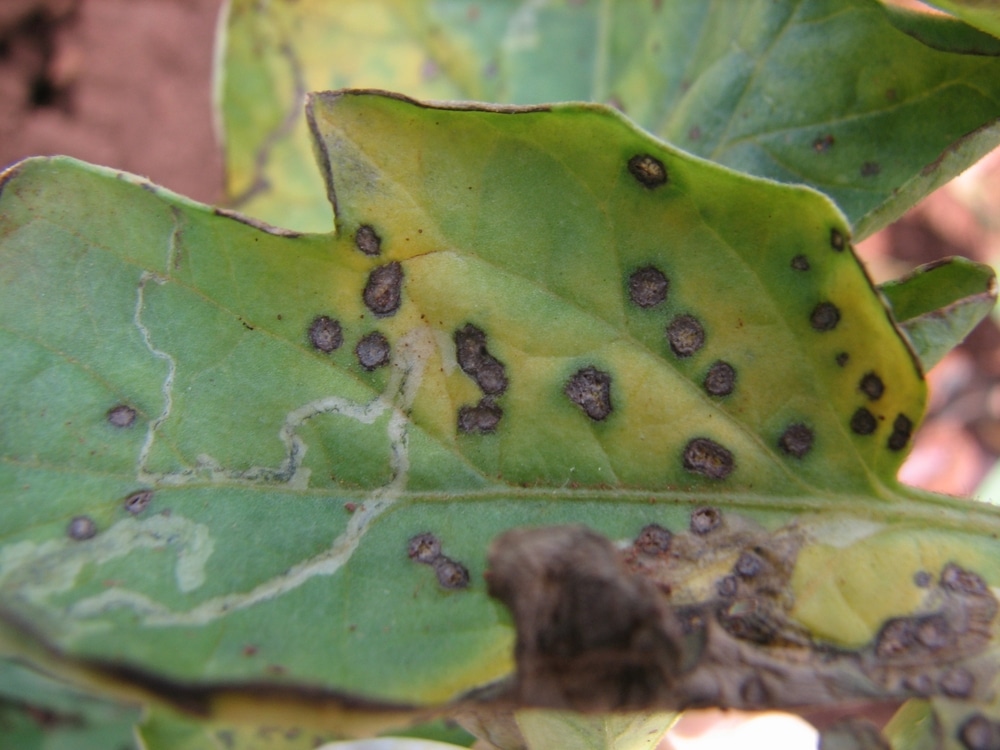If you’ve been a gardener for a while, you likely know that tomatoes can be a tricky plant to grow. So you’re undoubtedly proud when ruby red fruit starts forming on your tomato plants.
However, that makes it all the more disheartening when you visit your garden and discover white spots on your tomatoes.
Common Causes of White Spots on Tomatoes
The following are some of the most common reasons why white spots might appear on your tomatoes.
Bacterial Canker
Tomatoes commonly fall victim to bacterial infections, with bacterial canker being one of the biggest culprits of white spots in tomatoes.
Sadly, this intelligent bacteria doesn’t begin creating visible signs in tomatoes until it’s already infected the entire plant. And equally frustrating to gardeners, this bacteria can live on tomato plant debris that hasn’t decomposed for three years.
Aside from white spots on a tomato’s flesh and leaves, other signs of bacterial canker include:
- Wilted and discolored leaves
- Brown streak when you cut stem
- Sunken leaf veins
When the white spots grow on the fruit, they often have a tan or brown center.
Insect Infestation
Several insects enjoy eating the fruit and foliage of tomato plants, but the most notorious culprit is the stinkbug. When a stinkbug pokes its mouth into a tomato’s flesh, it creates a condition that scientists call a cloudy spot.
Signs that your tomato plant is suffering from a cloudy spot include:
- Visibly seeing the presence of stinkbugs
- Tiny white spots
- Fibrous texture around the spots
When a stinkbug dines on your tomatoes, it releases enzymes, toxins, and yeast to help them drink the tasty juice. That sounds unappetizing, but it won’t harm you.
Using an organic pesticide is the best way to deter stinkbugs from eating your tomatoes.
Sunscald
Sunscald can cause white spots on tomatoes because the sun can literally scald their delicate skin. It can feel like a paradox, given that tomatoes need access to at least six hours of sun per day to produce fruit.
But if you live in a hot climate and your tomato plants receive lots of direct sunlight, they may start to form large sunscald blotches. Such a condition is also common in tomato plants that are weak from disease or a bug infestation.
Signs that your tomato plants have sunscald include:
- Large white splotches
- Indentations in the splotches
- Black mold development
Placing shade over your tomato plants and applying mulch are some of the items you can do to stop the spread of sunscald.
Fungus
White spots on tomato plants don’t always affect the fruit. Instead, if you notice white or black fuzzy spots on the leaves and stems of your plant, you likely have a fungus problem on your hands.
The culprit is powdery mildew belonging to the Oidium fungus species. It’s most common to encounter the fungus in the spring and summer, as it thrives in the heat.
Some signs of fungus on your tomato plant include:
- Bright white spots on leaves and steams
- Gets on your hands when you touch it
- Fuzzy appearance
Unfortunately, Oidium fungus is a nuisance because it can live in the soil and spread via the wind. Using an organic fungicide can be effective at managing the problem, though.
Can You Eat Tomatoes That Have White Spots?
In most cases, it’s safe to eat tomatoes with white spots, and it’s unlikely you’ll notice a difference in taste. That includes those with fungal diseases, insect bites, and sunscalds.
That said, if you want to eat bacteria-infested tomatoes, it would be prudent to cook them first. However, you likely won’t want to can them, given that they often have an acidic flavor.
Since many people understandably turn their noses up to eating white parts of tomatoes where insects already feasted, you can cut them away. In fact, it’s recommendable given that the white spots often take on a fibrous texture.
The Bottom Line
White spots on tomatoes are a common problem gardeners face. Luckily, it’s possible to salvage many tomatoes from developing more white spots and to eat those that already have them.


